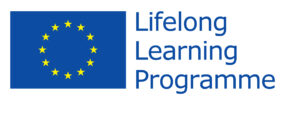Geographical aspects
Parts of Austria, Italy and Slovenia form a tri-lateral cross-border region, departing from the so-called mountain “Dreiländereck / Peč / Monte Forno” and being embedded in the greater “Alpe-Adria Region”. Administratively, the regions of Carinthia (Austria), Friuli-Venezia Giulia (Italy) and the state of Slovenia represent this border triangle. Along the border runs the mountain range “Karawanken” (Carinthia-Slovenia) and the Carnic Alps (Carinthia-Italy).
The border region is beside the mountain range mainly characterized by the karst and the coastal areas of Slovenia and Friuli-Venezia Giulia. From a geographical point of view this tri-state area has vast pine forests, mountain lakes and is well known for its tourist destinations, e.g. the skiing areas like the Nassfeld or Tarvisio.
Moreover, each individual region has its own characteristics. Whereas Carinthia and Friuli-Venezia Giulia are a region of a federal state and respectively an Autonomous Region, Slovenia is a state itself. Carinthia is the southernmost and fifth largest “Bundesland” of the Republic of Austria. Overall, about 556.845 people live here. Friuli-Venezia Giulia is one of Italy’s five autonomous regions with special statute. It is located in the extreme north-east of the country and has about 1.2 million inhabitants. The Republic of Slovenia is situated in South-Central Europe. The state is politically subdivided into 210 municipalities and has about 2 million inhabitants.
Characteristics of the border-region
The border region of Austria, Italy and Slovenia is characterized by three different languages, administrative systems and cultural backgrounds. These special characteristics cause benefits as well as disadvantages in cross-border cooperation. Mainly three languages (German, Italian and Slovene) from three different language families (Germanic, Romance and Slavic) are spoken, causing problems in communication. Beside the official languages in each country, the border-regions are furthermore characterized by different dialects. Although in cooperation matters the official working language is mostly English, a lot of people living in the border area are able to speak/understand at least one language of a respective neighbour.
Even if the three countries of this border triangle have a common history that interconnects them in some parts, cultural differences in cooperation matters are obvious. In meetings, for instance, it differs whether the Austrian, Italian or Slovene partner is responsible for the organisation. While meetings in Austria and Slovenia start early in the morning, in Italy meetings just begin at midmorning. This demonstrates only one example of existing intercultural differences in this cooperation-area. It is of utmost importance to be familiar with the respective national conventions and habits and to avoid thinking in stereotype-patterns. Each border region has its own behavioural specifics, so it is difficult to describe special characteristics for the Alpe-Adria Region as a whole apart from its obvious heterogeneity.
Also three administrative systems emboss this tri-border region, which highly influence business-cooperation and cross-border projects. As the country-specific institutional and legal frameworks are highly complex and differ in a lot of ways from each other, the regions have implemented various institutions with the purpose to facilitate cross-border cooperation. The systemic differences and barriers as such influence cross-border projects in general. They also have a huge impact on the behaviour of the actors ivolved. This becomes especially obvious when comparing the confidence in national politics and the administration in the border regions. While Austrian administration is fully based on law and legal compliance, in Slovenia the citizen orientation aspect has most priority, and in Italy the distrust in legal authorities is increasing. These different approaches also influence the perception of foreign partners within the trilateral area.
Summarizing, the border triangle Austria – Italy – Slovenia can be seen as one geographical area, which is highly reliant on cooperation in an economic, educational and also cultural perspective for its future development. However, this cross-border region is not characterized by specific political, linguistic or social similarities. All three nationalities have developed in a different way, despite some common historical and cultural backgrounds. Nevertheless, the area represents a collaborative and future-oriented environment that opens further space for cross-border cooperation and networks.


